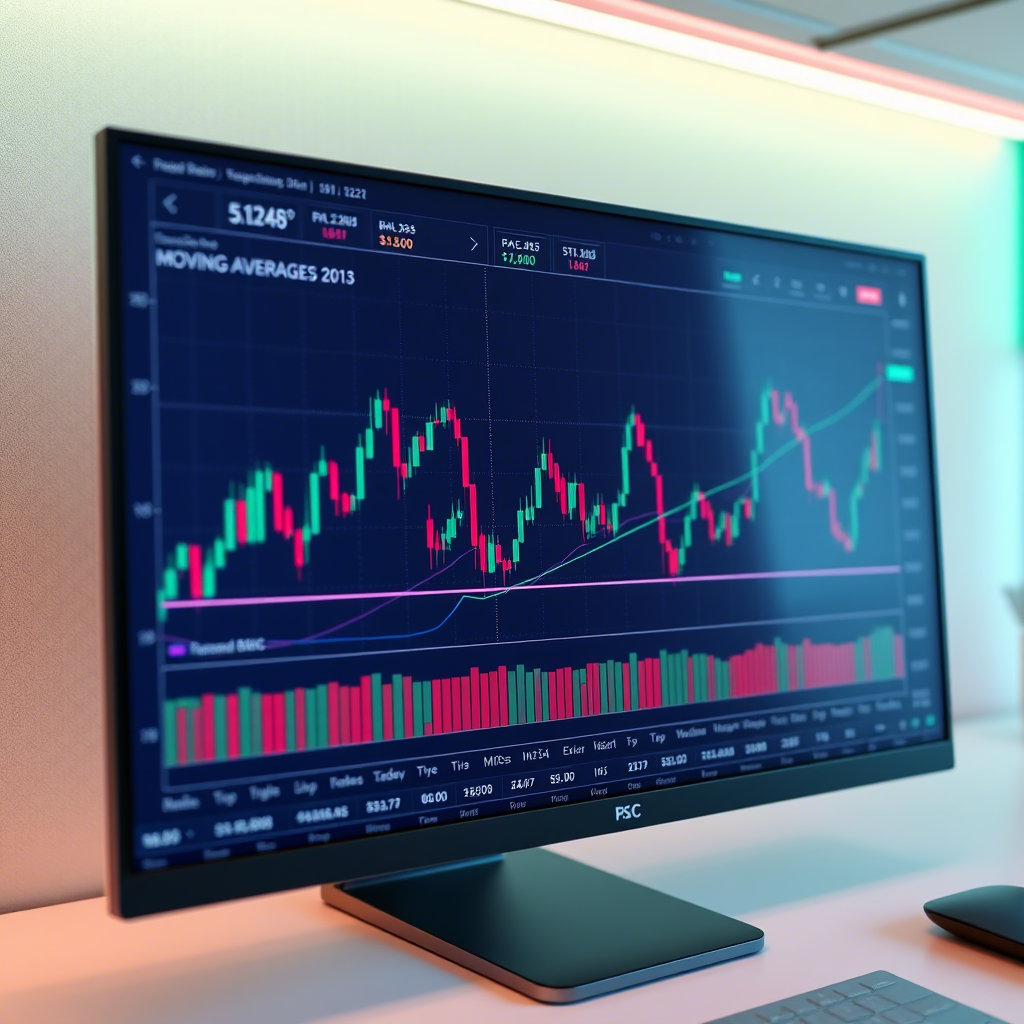Mastering Trends in Forex Trading: Your Guide to Profiting from Market Moves

What Are Trends in Forex Trading?
A trend in forex refers to the consistent direction of a currency pair’s price movement over time. Trends can be upward (bullish), downward (bearish), or sideways (range-bound). They reflect the collective behavior of market participants—traders, institutions, and central banks—driven by economic data, sentiment, or global events.
Trends are the backbone of many trading strategies because they indicate where the market is headed, allowing traders to “ride the wave” for profits. As the saying goes, “The trend is your friend,” and understanding it is key to navigating the forex market.
Why Trends Matter in Forex
Trading with trends offers several advantages:
-
Higher Probability Trades: Trends reflect sustained market momentum, increasing the likelihood of profitable trades.
-
Clear Direction: They simplify decision-making by showing whether to buy or sell.
-
Versatility: Trends apply to all timeframes, suiting scalpers, day traders, and long-term traders.
-
Alignment with Fundamentals: Trends often mirror economic shifts, like interest rate changes or GDP growth.
-
Risk Management: Trading with the trend allows tighter stop-losses, as prices are less likely to reverse abruptly.
By mastering trends, traders can capitalize on the market’s natural flow, avoiding the pitfalls of fighting against it.
Types of Trends in Forex
Forex trends come in three main forms, each with distinct characteristics:
1. Uptrend (Bullish Trend)
What It Is: Prices consistently make higher highs and higher lows, indicating increasing demand for a currency.
Characteristics:
-
Driven by positive economic news (e.g., strong US jobs data boosting USD).
-
Marked by upward-sloping trendlines or moving averages.
-
Offers buy opportunities during pullbacks to support levels.
Example: EUR/USD rising steadily after an ECB rate hike.
2. Downtrend (Bearish Trend)
What It Is: Prices form lower highs and lower lows, signaling selling pressure and declining currency value.
Characteristics:
-
Fueled by negative news (e.g., weak UK GDP weakening GBP).
-
Identified by downward trendlines or falling moving averages.
-
Provides sell opportunities during rallies to resistance.
Example: USD/JPY dropping after a Bank of Japan intervention.
3. Sideways Trend (Range-Bound)
What It Is: Prices oscillate between support and resistance without a clear direction, indicating indecision.
Characteristics:
-
Common during low-volatility periods or ahead of major news.
-
Marked by horizontal price channels.
-
Suits range-trading strategies, buying at support and selling at resistance.
Example: AUD/USD consolidating before an RBA rate decision.
How to Identify Trends
Spotting trends is a critical skill in forex trading. Here’s how to do it using technical tools:
1. Trendlines
Draw lines connecting higher lows in an uptrend or lower highs in a downtrend. A valid trendline should touch at least three price points, confirming the trend’s direction.
2. Moving Averages
Moving averages (MAs) smooth price data to reveal trends:
-
Simple Moving Average (SMA): Averages prices over a period (e.g., 50-day).
-
Exponential Moving Average (EMA): Prioritizes recent prices for faster signals.
-
A bullish crossover (e.g., 20-day EMA above 50-day EMA) confirms an uptrend.
3. Technical Indicators
Indicators like the Average Directional Index (ADX) measure trend strength:
-
ADX above 25 indicates a strong trend.
-
ADX below 20 suggests a weak or sideways market.
4. Price Action
Observe price patterns:
-
Higher highs and lows signal an uptrend.
-
Lower highs and lows indicate a downtrend.
-
Consolidation near support/resistance suggests a range.
5. Chart Timeframes
Trends vary by timeframe:
-
Short-term (M5, M15): For scalping or day trading.
-
Medium-term (H1, H4): For swing trading.
-
Long-term (D1, W1): For position trading.
Use higher timeframes (e.g., D1) to confirm trends and lower ones (e.g., H1) for entries.
Strategies for Trading Trends
Trend trading involves aligning with the market’s direction. Here are three effective strategies:
1. Trend Following
What It Is: Buying in uptrends or selling in downtrends, riding the trend until it reverses.
How It Works:
-
Confirm the trend with a 50-day SMA or ADX above 25 on a daily chart.
-
Enter buys on pullbacks to support (uptrend) or sells on rallies to resistance (downtrend).
-
Use a trailing stop to lock in profits as the trend continues.
Best For: Swing traders seeking sustained moves.
2. Pullback Trading
What It Is: Entering trades during temporary retracements within a trend.
How It Works:
-
Identify an uptrend/downtrend using EMAs or trendlines on a 4-hour chart.
-
Wait for a pullback to a key level (e.g., 50% Fibonacci retracement or 20-day EMA).
-
Enter with confirmation from candlestick patterns (e.g., bullish engulfing).
Best For: Traders with patience to wait for optimal entries.
3. Breakout Trend Trading
What It Is: Capitalizing on trend continuations after prices break consolidation zones.
How It Works:
-
Spot a trend on a daily chart, followed by a consolidation (e.g., triangle pattern).
-
Place buy/sell orders above/below the breakout level on an hourly chart.
-
Confirm with indicators like RSI or high volume to avoid false breakouts.
Best For: Day traders during volatile sessions.
Tips for Trading Trends
Maximize your success with these practical tips:
-
Confirm with Multiple Tools: Combine trendlines, MAs, and ADX for stronger signals.
-
Trade Active Sessions: London and New York sessions offer clearer trends for pairs like EUR/USD.
-
Use a Demo Account: Practice trend strategies risk-free to refine your skills.
-
Align with Fundamentals: Trends often follow economic news (e.g., rate hikes); use an economic calendar.
-
Be Patient: Wait for pullbacks or breakouts rather than chasing overextended moves.
Common Mistakes to Avoid
Steer clear of these pitfalls when trading trends:
-
Fighting the Trend: Avoid counter-trend trades unless clear reversal signals appear.
-
Misreading Weak Trends: Low ADX readings suggest indecision; wait for stronger signals.
-
Overtrading: Taking every minor move dilutes focus and increases risk.
-
Ignoring Risk Management: Always risk 1-2% per trade and use stop-losses.
-
Using Wrong Timeframes: Short-term charts may show noise, not trends; confirm with higher timeframes.
Tools for Identifying and Trading Trends
Leverage these resources to enhance your trend trading:
-
Trading Platforms: MetaTrader 4/5 or TradingView for charting and indicators.
-
Indicators: MAs, ADX, or RSI for trend confirmation.
-
Economic Calendars: Forex Factory or DailyFX to align trends with news.
-
Trading Journals: Log trades to analyze trend strategy performance.
Combining Trends with Other Analysis
Trends are most powerful when paired with other tools:
-
Price Action: Use candlestick patterns (e.g., pin bars) to confirm entries.
-
Support/Resistance: Enter trades near key levels within a trend.
-
Fundamentals: A bullish USD trend after a Fed rate hike is more reliable.
-
Volatility Indicators: Bollinger Bands or ATR to gauge trend strength.
Conclusion
Trends are the lifeblood of forex trading, offering a clear path to profit by aligning with the market’s momentum. By mastering tools like moving averages, trendlines, and ADX, and using strategies like trend following or pullback trading, you can ride bullish or bearish waves with confidence. Start with a demo account, keep your analysis simple, and pair trends with sound risk management to avoid costly mistakes. Whether you’re trading EUR/USD or GBP/JPY, understanding trends will elevate your forex game. Dive into the market today and let the trend be your friend!




